
by chow | Oct 29, 2015 | Current research
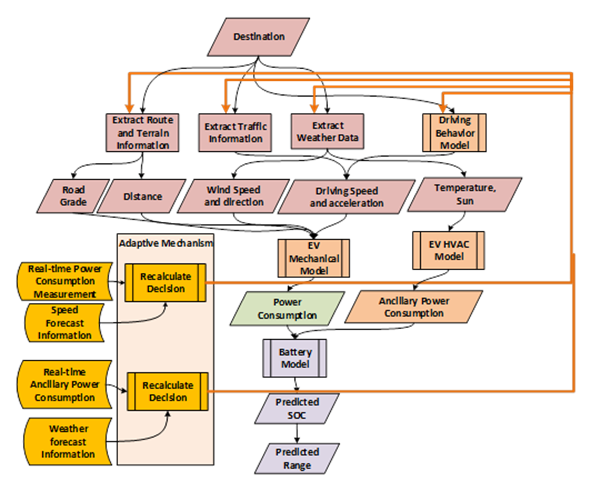
The remaining driving range of an electric vehicle (EV) is a complex function of various types of data with different formats that need to be extracted and collected from different sources using big data analytics. In our previous project, we had designed a big data framework to extract, classify, and pre-analyze the data regarding the route, terrain, driving behavior, weather, etc. from different resources, and find the correlations between the data and range estimation.
In this project, we Incorporate and analyze the ancillary power consumed mainly by the heating, ventilating, and air conditioner (HVAC) system in calculating the driving range of the vehicle using big data analysis techniques. Moreover, the current version of the algorithm estimates the range based on certain assumptions about the driving conditions of each trip such as weather, driving behavior, road condition, etc. However, the driving conditions are subject to change due to unpredicted events along the trip (such as accidents, sudden climate changes, etc.) which can make the predicted range inaccurate. Therefore, we design an adaptive structure to update the predicted power consumption using weather forecast and traffic report information in real-time, to compensate for the changes in environmental and driving conditions.
Sponsor:
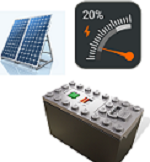
by chow | Oct 29, 2015 | Current research
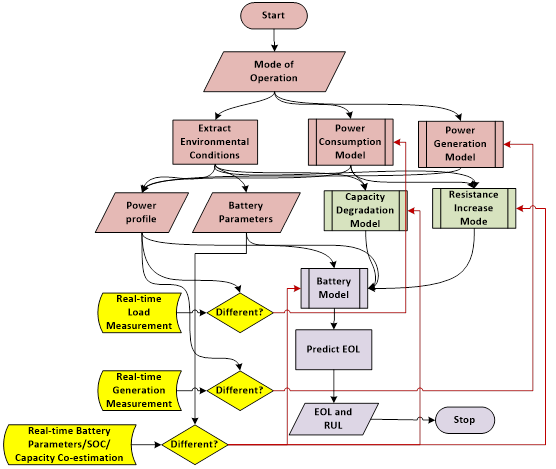
This project focuses on translating a novel Smart Battery Gauge technology to fill the increasing need for accurate battery state of charge (SOC) and remaining useful life (RUL) estimations for stationary energy storage of renewable energy. As compared to the existing battery monitoring methods, the reliably accurate estimation date generated by this technology will provide systems management and operations with the advantages of improved energy storage system efficiency, reliability, cost-effectiveness, longer lifespan, and reduced capital and operation/maintenance costs. In order to determine the technical feasibility and functional requirements of applying this technology in the stationary energy storage market and provide a commercially valuable solution, this project will result in a software prototype of the Smart Battery Gauge technology to demonstrate its real-time adaptive battery SOC and RUL estimations with market-leading accuracy and reliability, and its flexible customization for multiple different battery chemistries.
The objectives of this project are to:
1) Extract the relevant data and models that are needed for RUL estimation,
2) Design the adaptive predictive battery RUL estimation algorithm that can adjust battery parameters with real-time measurement feedback, and
3) Implement and demonstrate the Smart Battery Gauge technology prototype in software and benchmark its performance with existing approaches.

by chow | Oct 28, 2015 | Completed projects
The goal of this project is to develop a cooperative distributed Home Energy Management System (HEMS) for 1) a single house, and 2) aggregated houses. In this cooperative distributed HEMS, energy sources and loads can coordinate and cooperate with each other to maximize the user comfort, meet the power constraints (e.g., avoid over-loading), optimize the power flows, decrease the system cost and the electricity bill in a single house and among aggregated houses. It also includes smart battery charging/discharging strategies to optimize the integration of the energy storage system. The project consists of design, development and demonstration phases.
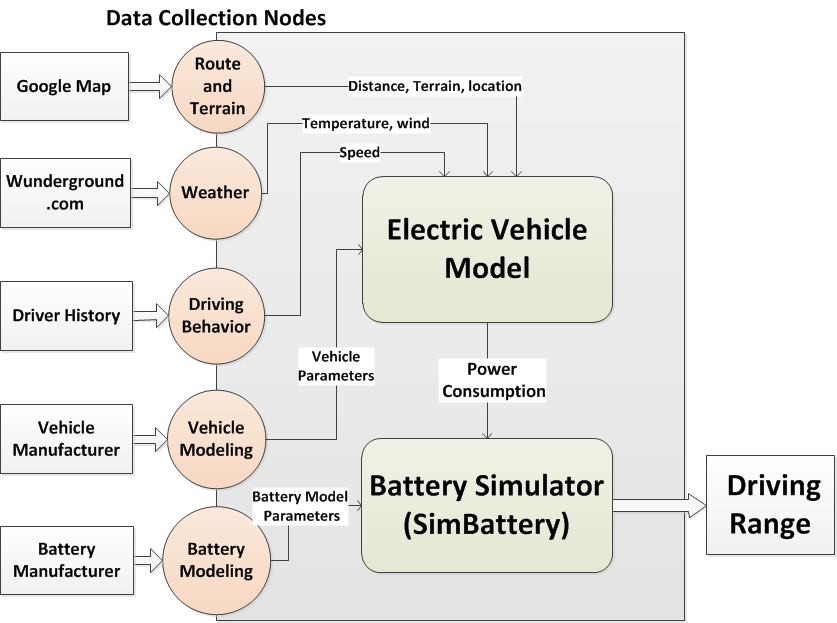
by chow | Nov 14, 2014 | Completed projects
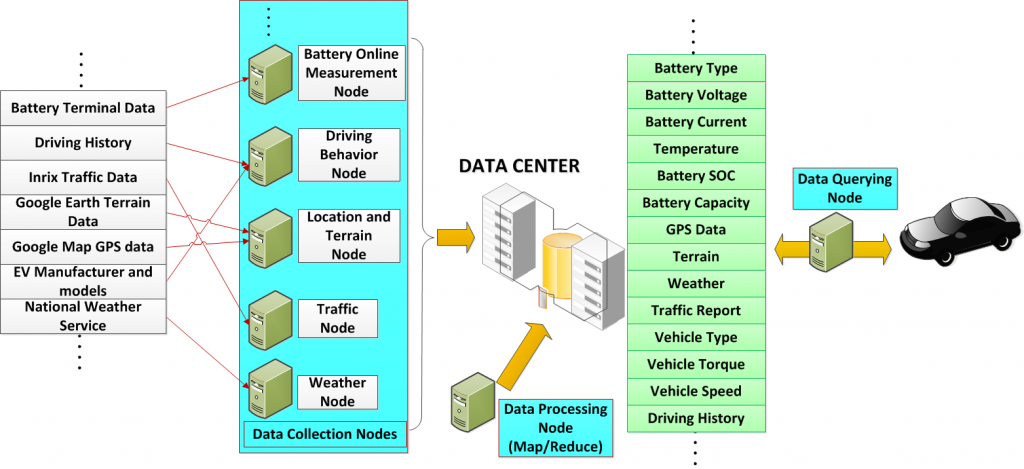
Project Description
The amount of data collected in Electric Vehicles has been growing fast because we have many more sensors, higher bandwidth communication systems, and cheaper memory to monitor and measure real-time driving range related data and store the data on the vehicles, in connected clouds, etc. This massive amount of data can have different levels of accuracy, resolutions, and relevance in unstructured ways. Big Data technologies have been emerging to address huge, diverse and unstructured data to substantially improve the overall system performance. With proper use of Big Data concepts and techniques, the remaining driving range estimation of the vehicle can be substantially improved.
The range estimation needs the incorporation and synchronization of all standard, real-time and historical data. Usually, the standard and historical data provides an initial prediction of the driving range; and the real-time data updates the estimation during the driving. However, under different conditions, some data are more relevant than others for the range estimation. This data can be historical, standard, or real-time depending on different situations. The big data analytics helps us identify the relevant data and discover its correlation to the remaining driving range estimation.
Publication
- H. Rahimi-Eichi and M.-Y. Chow, “Big-Data Framework for Electric Vehicle Range Estimation,” presented at the 40th Annual Conference of the IEEE Industrial Electronics Society (IECON2014), IEEE, Dallas, TX , 2014.
Link
Samsung Advanced Institute of Technology (SAIT)
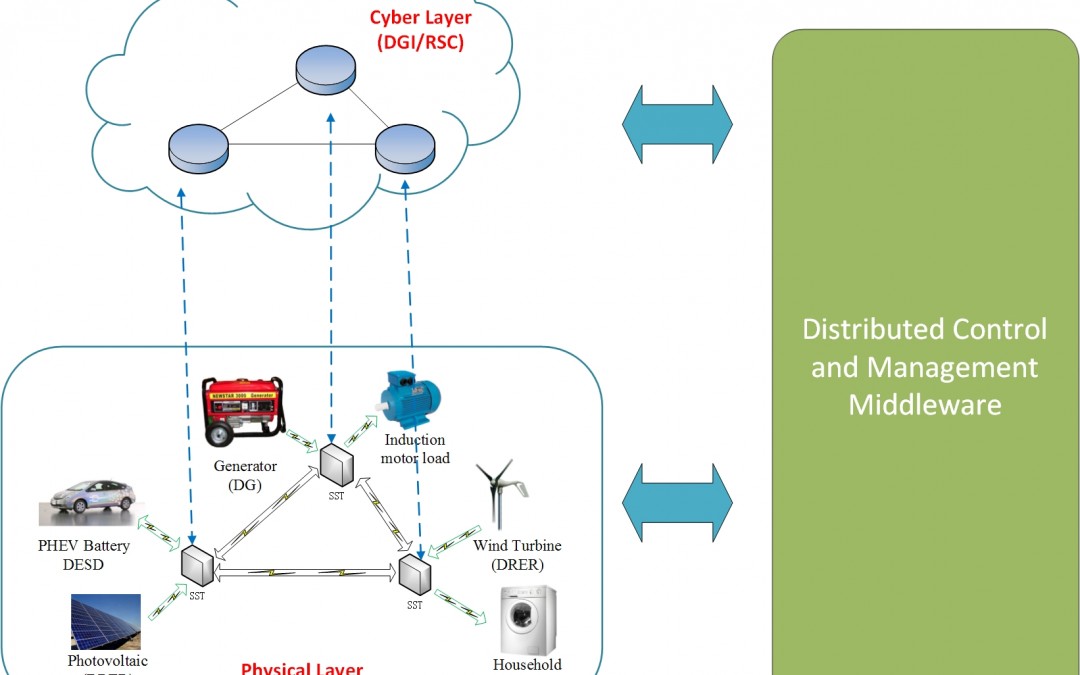
by chow | Nov 13, 2014 | Current research
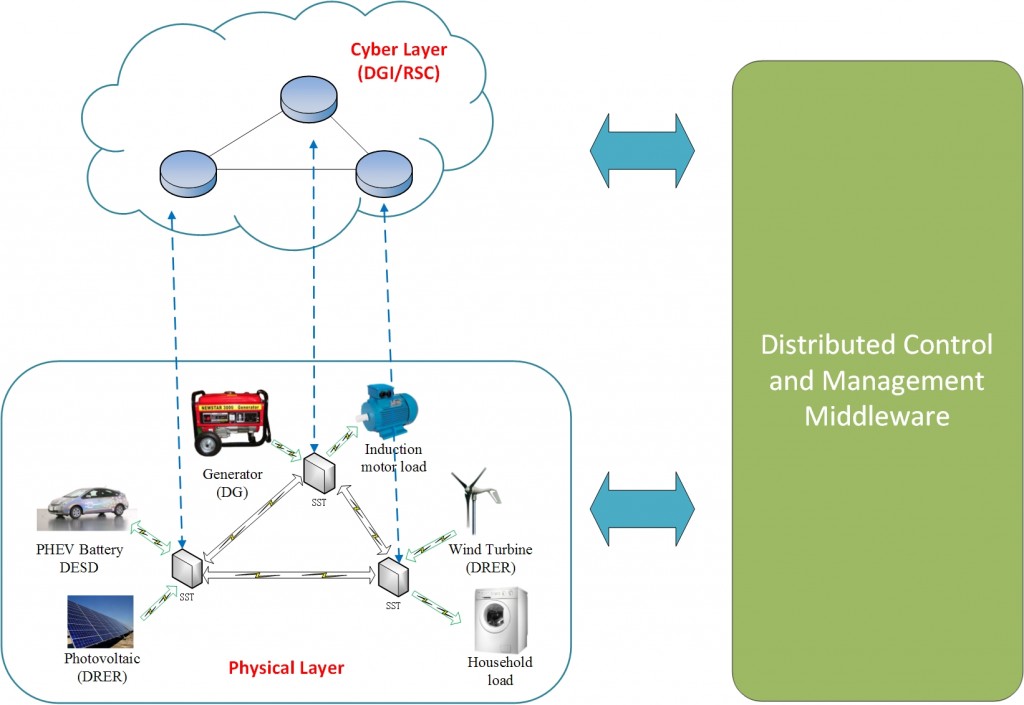
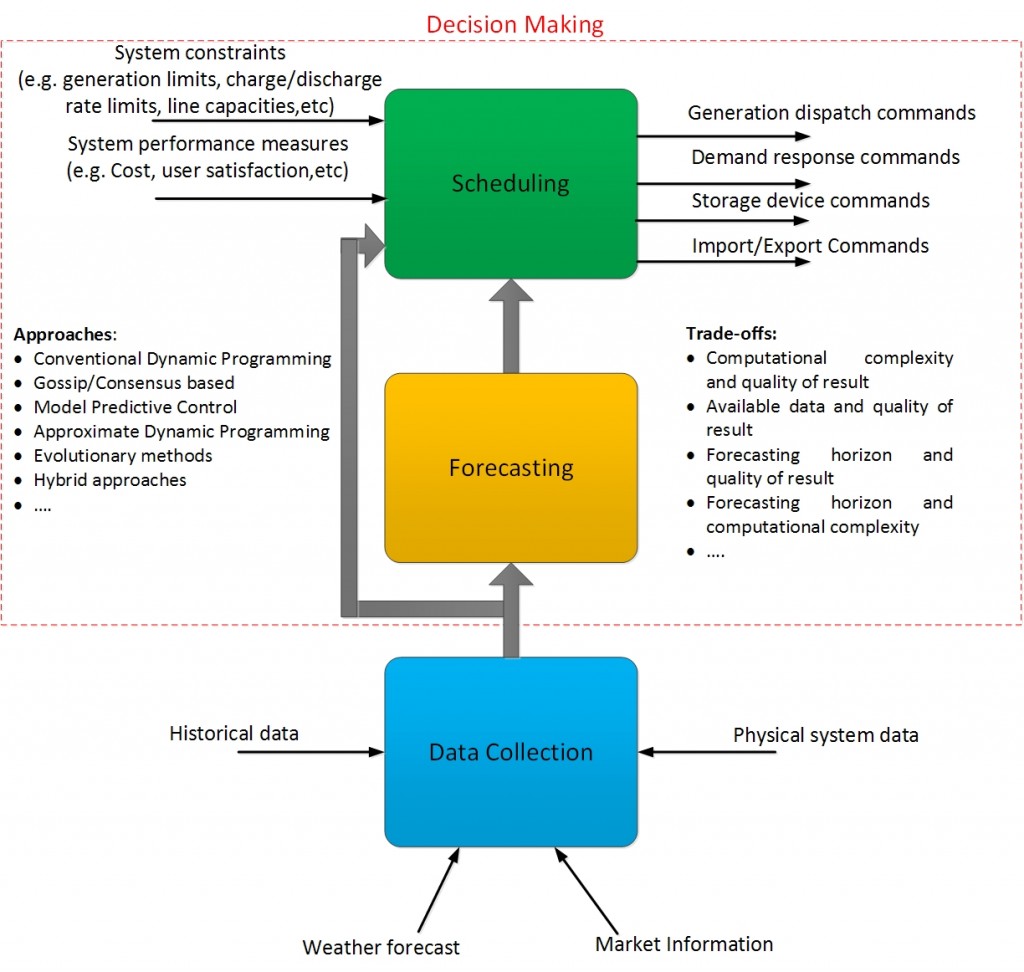
Project Description:
The efficiency, reliability, economics and sustainability of the production and distribution of electricity are the major concerns of all the power utilities and customers. Without large investments in new transmission capacity and generation sources to keep up with the growth in demand and corresponding investment, the existing early-twentieth-century-designed power grids would face a lot of challenges. An innovative and economical way of solving these challenges is the introduction of “microgrid” concept. Microgrids are electricity distribution systems consisting of local loads and distributed energy resources such as distributed generators, storage devices, and responsive demands as cheap spinning reserves. This flexibility of generation and demand available in the microgrids along with the access to renewables, can dramatically improve the power quality and reliability of the power networks at the distribution level. However, economically and intelligently managing these energy resources to improve the power quality, maximize the benefit of the unit owners while ensuring their privacy, requires advanced optimization and control technologies.
The objective of ADAC Distributed Intelligent Energy Management (DIEM) project is to design a robust cooperative distributed energy management framework for the microgrids to coordinate and schedule energy generation, energy storage and energy demand at different levels to achieve global optimal in terms of economic operation while satisfying the quality constraints. The envisioned framework is scalable, robust to communication imperfections (such as time delay, packet losses), and robust to single point of failures.
Because of the distributed nature of the controllable devices (e.g., distributed generations and controllable loads), agent-based system modeling is used by utilizing the graph theory. Assuming a two-way communications among distributed controllable devices, the system can be modeled using adjacency matrix based on the availability of communication link between each pair of agents. Based on the communications network, consensus and gossip based algorithm are applied for the development of the DIEM algorithms.
Publications:
- Z. Zhang and M.-Y. Chow, “Convergence Analysis of the Incremental Cost Consensus Algorithm Under Different Communication Network Topologies in a Smart Grid,” Power Systems, IEEE Transactions on, vol. 27, no. 4, pp. 1761–1768, 2012.
- Z. Zhang, Y. Zhang, and M.-Y. Chow, “Distributed energy management under smart grid plug-and-play operations,” in Power and Energy Society General Meeting (PES), 2013, no. Ic, pp. 1–5.
- N. Rahbari-asr, Y. Zhang, and M. Chow, “Stability Analysis for Cooperative Distributed Generation Dispatch in a Cyber-Physical Environment,” in IECON 2014 – 40th Annual Conference on IEEE Industrial Electronics Society, Dallas, TX, USA, 2014.
- Y. Zhang and M.-Y. Chow, “Hybrid Incremental Cost Consensus Algorithm for Smart Grid Distributed Energy Management under Packet Loss Environment,” in IECON 2014 – 40th Annual Conference on IEEE Industrial Electronics Society, Dallas, TX, USA, 2014.
- N. Rahbari-Asr, Z. Zhang, and M.-Y. Chow, “Consensus-Based Distributed Energy Management with Real-Time Pricing,” in 2013 IEEE Power & Energy Society General Meeting, 2013, pp. 1–5.
- N. Rahbari-Asr, U. Ojha, Z. Zhang, and M.-Y. Chow, “Incremental Welfare Consensus Algorithm for Cooperative Distributed Generation/Demand Response in Smart-Grid,” IEEE Transactions on Smart Grid, vol. 5, no. 6, pp. 2836–2845, 2014.
Links:
by chow | Aug 22, 2014 | Internships
About the Project
Students built a fast-prototyping experimental platform for future battery tests. By implementing the battery monitoring algorithms on this PHEV testbed, the algorithms can be evaluated and optimized and thus make PHEV batteries more reliable.
Documentations
kambojabet
,
kayaraya88
,
kayaraya
,
mahjong wins 3
,
kayaraya slot
,
kayaraya slot
,
dewaslot88
,
lapakpusat
,
https://commcrest.asttecs.com/
,
Kelola interaksi pelanggan secara efisien lewat sistem CRM MTP di KAYARAYA, yang dirancang untuk menyatukan data dan strategi dalam satu dasbor cerdas.
,
situs depo 5k
,
https://wp.appcheap.io/
https://heritage.netadvent.org/about-us/
,
https://fwd.getcourse.id/getcourse/
,
https://capitaland.deegix.com/
,











